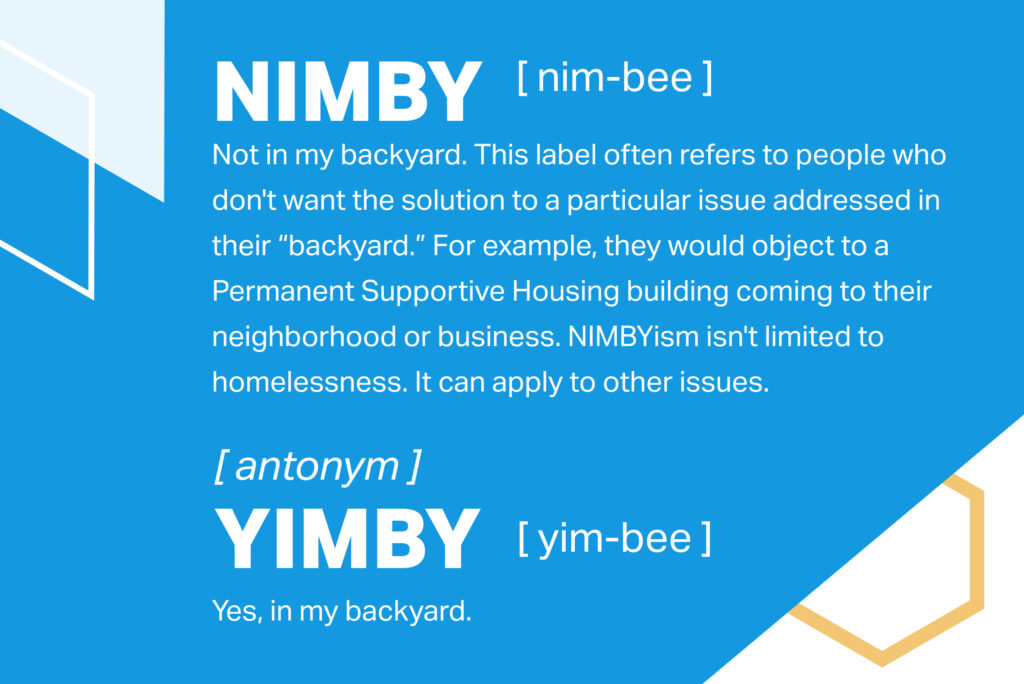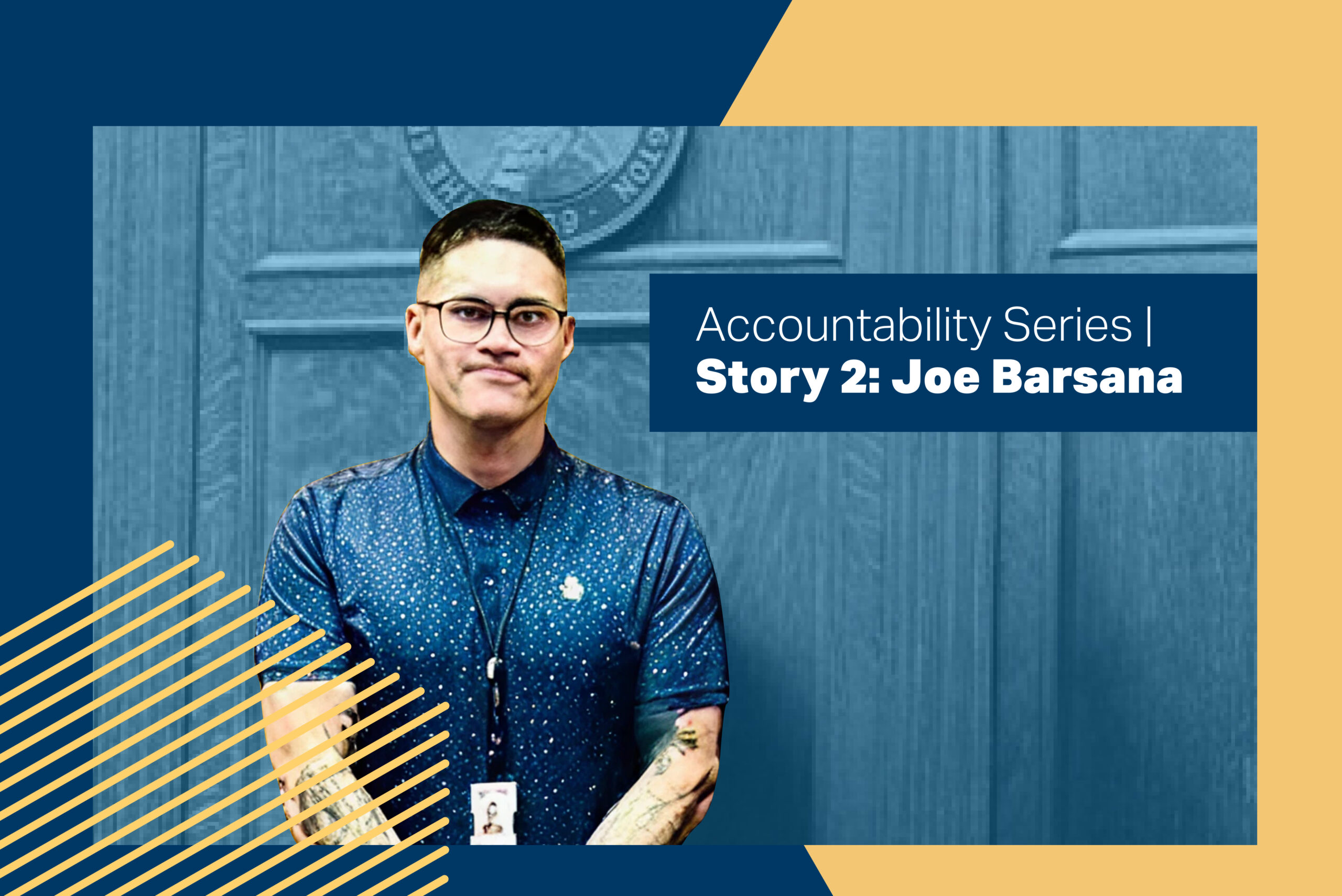Homelessness Glossary: 15 terms to know
April 14, 2022

Organizations, experts, and advocates within the homelessness field use specific words and phrases that aren't always common knowledge. To help bridge the information gap, below is a list of terms that will help you better understand issues related to homelessness. Terms defined include the types of homelessness, shelter and housing classifications, and tools used to address the crisis.
1. Unsheltered & Sheltered homelessness
Unsheltered homelessness refers to people sleeping outdoors in places not designed as a regular sleeping location, such as the street, a park, under an overpass, tent encampments, abandoned buildings, or vehicles. Sheltered homelessness includes people staying in emergency shelters, transitional housing programs, or safe-havens.
2. Congregate shelter
A congregate shelter is a shared living environment combining housing and services such as case management and employment services. Often in congregate shelters, people sleep in an open area with others. They are typically separated by gender and have set hours of operation.
3. Emergency shelter
A facility with the primary purpose of providing temporary shelter for homeless people. For example, cold and hot weather shelters that open during extreme temperatures are considered emergency shelters.
4. Imminent risk of homelessness
It applies to individuals and families on the brink of being unhoused. They have an annual income below 30 percent of the median income for the area. They don't have sufficient resources or support networks needed to obtain other permanent housing.
5. Chronic homelessness
People experiencing chronic homelessness are entrenched in the shelter system, which acts as long-term housing for this population rather than an emergency option. They are likely to be older, underemployed, and often have a disability.
6. Transitional homelessness
Transitional homelessness is when people enter the shelter system for only one stay – usually for a short time. They are likely to be younger and have become homeless because of a catastrophic event, such as job loss, divorce, or domestic abuse.
7. Episodic homelessness
Episodic homelessness refers to people who experience regular bouts of being unhoused. Unlike transitional homelessness, they are chronically unemployed and may experience medical, mental health, and substance use issues.
8. Hidden homelessness
Hidden homelessness refers to people who aren't part of official counts. They might be couch surfing at a friend's or a relative's house.
9. Transitional housing
Transitional housing provides people experiencing homelessness a place to stay combined with supportive services for up to 24 months. Pallet shelter villages are considered transitional housing. Residents, on average, stay three to six months before moving on to the next step, which includes permanent housing or reuniting with family.
10. Permanent Supportive Housing
This housing model provides housing assistance and supportive services on a long-term basis to people who formerly experienced homelessness. PSH is funded by the Department of Housing and Urban Development's (HUD) Continuum of Care program and requires that the client have a disability for eligibility.
11. Continuum of Care
The Continuum of Care (CoC) program promotes community-wide commitment to the goal of ending homelessness. The program provides funding for efforts by nonprofit providers and state and local governments to quickly rehouse homeless individuals and families. At the same time, minimizing the trauma and dislocation caused to homeless individuals, families, and communities by homelessness. For example, CoC program funds can be used for Rapid Rehousing, short-term rental assistance, and services to help individuals and families quickly exit homelessness
12. HMIS
The Homeless Management Information System (HMIS) collects and reports data on the characteristics of people experiencing homelessness and their service use patterns.
13. NIMBY & YIMBY
NIMBY = Not in my backyard. This label often refers to people who don't want the solution to a particular issue addressed in their "backyard." For example, they would object to a Permanent Supportive Housing building coming to their neighborhood or business. NIMBYism isn't limited to homelessness. It can apply to other issues. Conversely, YIMBY= Yes, in my backyard.
14. Criminalizing homelessness
Refers to policies, laws, and local ordinances that make it illegal, difficult, or impossible for unsheltered people to engage in the everyday activities that most people carry out daily. "No sit, no lie" laws, which prevent people from sitting or lying down in public, are considered criminalization of homelessness. Other examples include prohibiting camping in public, sleeping in parks, panhandling, and sweeping tent encampments (removing the personal belongings of people experiencing homelessness).
15. Point-in-Time count
This count is a one-night estimate of both sheltered and unsheltered homeless people nationwide. Local groups conduct one-night counts during the last week in January of each year. Because of the 2020 pandemic, some point-in-time counts have been suspended or occurred later in the year.


